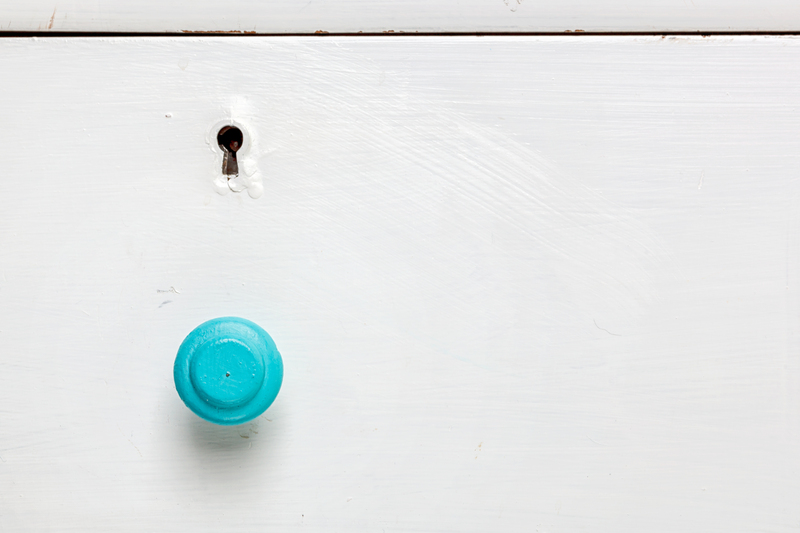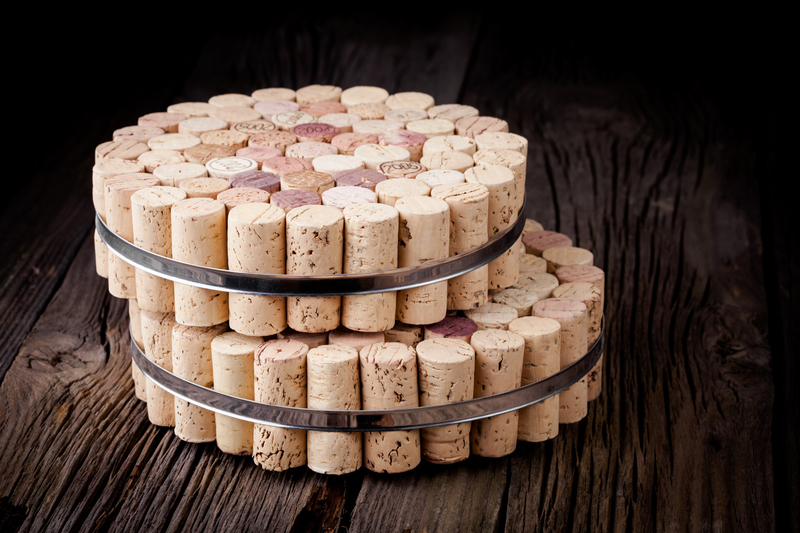Eco-Friendly Upcycling: How to Repurpose Waste Into Gorgeous New Items
Eco-friendly upcycling is more than just a trend--it's a sustainable way of life. In a world increasingly aware of environmental issues, upcycling offers an innovative answer: transforming what we consider "waste" into beautiful, functional products. Whether you're a seasoned eco-warrior or just beginning your green journey, this guide will introduce you to the art and science of repurposing waste into stunning new items that add value to your home and the world.

What Is Upcycling and Why Is It Important?
Upcycling--sometimes called creative reuse--refers to the process of taking old, discarded materials and turning them into something of higher value. Unlike recycling, which breaks down materials to fabricate new products, upcycling transforms waste without breaking it down, thereby saving energy, reducing pollution, and preserving resources.
Why Choose Eco-Friendly Upcycling Over Traditional Recycling?
- Reduced Environmental Impact: Upcycling uses less energy and produces fewer emissions than standard recycling.
- Original Creations: Each upcycled piece is often unique, reflecting your creativity and style.
- Resourcefulness: Upcycling encourages innovative thinking, helping you find value in items that might otherwise end up in landfills.
- Economic Savings: Most upcycled projects require minimal investment, making sustainability accessible to all.
The Environmental Benefits of Upcycling
Eco-friendly upcycling tackles our waste problem while adding beauty to our lives. Consider these powerful benefits:
- Reduces Landfill Waste: Every item upcycled is one less item thrown away.
- Conserves Natural Resources: Upcycling reduces the demand for raw materials, helping to protect ecosystems.
- Lowers Carbon Footprint: By avoiding waste processing or new manufacturing, upcycling slashes greenhouse gas emissions.
- Inspires Sustainable Living: Seeing the potential in ordinary items helps foster a more conscious, eco-centric lifestyle.
Getting Started: Upcycling Basics for Beginners
Anyone can try upcycling--no need to be an expert crafter. All you need is an open mind, a few basic tools, and some creative ideas. Start by looking around your home for materials you might otherwise throw away:
- Glass jars (from sauces, jams, or pickles)
- Old clothing or textiles
- Cardboard boxes
- Plastic containers
- Wooden pallets
- Broken furniture
Tip: Save interesting packaging, worn-out items, or broken goods--you might be surprised what you can create!
Creative Upcycling Ideas: How to Repurpose Waste Into Gorgeous New Items
1. Transform Glass Jars Into Elegant Decor
- Vases & Candle Holders: Clean jars, decorate with twine or lace, and use them for flowers or tealights.
- Storage Solutions: Store craft supplies or pantry staples with style by labeling and decorating glass jars.
- Lamp Bases: With basic wiring, jars can become unique lamp bases for a rustic or vintage look.
2. Upcycle Old Clothing Into Fashion & Function
- Patchwork Quilts: Combine worn shirts or jeans into cozy, colorful quilts.
- Reusable Tote Bags: Turn an old T-shirt into a no-sew shopping bag by cutting and tying the fabric.
- Rag Rugs: Braid or weave strips of fabric from old garments to create beautiful custom rugs.
3. Cardboard Creations for Adults and Kids
- Organizers: Stack and decorate boxes for unique desk organizers or toy storage.
- Wall Art: Cut and paint cardboard to craft 3D wall hangings or photo frames.
- Kids' Playhouses: Build forts, castles, or dollhouses from large boxes--an eco-friendly alternative to plastic toys.
4. Upcycling Plastic Waste Into Chic Accessories
- Plastic Bottle Planters: Cut and paint bottles for indoor gardens or balcony planters.
- Jewelry: Melt and reshape plastic pieces into beads for necklaces, earrings, or bracelets.
- Storage Bins: Large containers can organize crafts, garage supplies, or even laundry!
5. Pallet Wood Projects for Rustic Charm
- Garden Furniture: Reimagine wooden pallets into benches, tables, or planter boxes.
- Wall Shelving: Mount pallet sections on the wall for a modern, sustainable shelving solution.
- Decor Signs: Paint reclaimed palette wood with inspirational quotes for custom wall art.
6. Breathing New Life Into Broken Furniture
- Chairs Into Plant Stands: Remove or repair broken seats, paint them, and use leftover surfaces for flower pots.
- Drawers As Shadow Boxes: Attach old dresser drawers to the wall for creative shelving and displays.
- Table Top Makeovers: Mosaic tile, paint, or decoupage can transform old tables into statement pieces.
Advanced Upcycling Projects: Take Your Skills Further
Once you've mastered the basics, challenge yourself with more ambitious upcycling ideas:
- Bicycle Tire Mirrors: Clean an old bike tire, fit it with round glass, and hang for instant industrial chic.
- Bathtub Sofa: Repurpose an old clawfoot tub into a whimsical, ultra-durable loveseat.
- Lighting Fixtures: Reconfigure metal cans or utensils for pendant lamps and chandeliers.
- Electronic Components Art: Use circuit boards and wiring to construct wall art or sculptures.
Tips for Successful Eco-Friendly Upcycling
- Safety First: Always wear protective gear when working with tools, glass, or chemical finishes.
- Quality Materials Matter: Start with items that aren't contaminated, overly damaged, or hazardous.
- Get Inspired: Browse online communities or social media for upcycling tutorials and support.
- Think Function and Beauty: Upcycled items should be both useful and visually appealing.
- Don't Rush: Take your time, especially when developing new skills or experimenting.
Where to Source Upcycling Materials
- At Home: Start with your own waste, discarded items, and unused goods.
- Neighbors and Friends: Offer to take unwanted items off their hands.
- Local Recycling Centers: Many centers set aside materials perfect for creative reuse.
- Thrift Stores & Flea Markets: Discover hidden gems at bargain prices.
- Online Marketplaces: Look for free or low-cost materials on platforms such as Craigslist, Facebook Marketplace, or Freecycle.
Upcycling for Profit: Turning Passion Into Business
Eco-friendly upcycling isn't just for personal satisfaction--it can also become a thriving business. There's enormous demand for unique, sustainable products. Here are some tips for anyone interested in building an upcycling business:
- Find Your Niche: Specialize in a certain material (like wood, metal, or textiles) or product category (like home decor, jewelry, or furniture).
- Build a Brand: Use eco-conscious branding and storytelling to tell the history of your creations.
- Sell Online: Platforms like Etsy, eBay, and Instagram are ideal for showcasing and selling upcycled goods.
- Collaborate Locally: Partner with local artisans, participate in craft fairs, or offer workshops to grow your network.
Upcycling in Daily Life: Small Habits, Big Impact
Incorporating eco-friendly upcycling into everyday life can radically reduce your environmental footprint. Here's how:
- Opt for Refillable Containers: Transform glass bottles or jars for kitchen storage or beauty products.
- Gift Differently: Give upcycled presents--like homemade candles in repurposed containers or painted furniture--to friends and family.
- Teach Upcycling to Kids: Involve children in creative projects to develop their environmental awareness early on.
- Host Swap Parties: Exchange gently used clothes, books, or decor with neighbors instead of buying new.
Common Myths About Upcycling Debunked
- Myth: Upcycled goods look cheap and unfinished.
Fact: With creativity and care, repurposed materials can become gorgeous, high-quality items found in top design magazines! - Myth: Upcycling is too time-consuming.
Fact: Many projects can be completed in an hour or less--making it ideal for busy lives. - Myth: Only crafty people can upcycle.
Fact: Anyone can learn--the internet is full of step-by-step tutorials for all skill levels.

The Future of Eco-Friendly Upcycling
From artists to hobbyists to multinational brands, upcycling is shaping the future of sustainability. Innovations like upcycled fashion, zero-waste packaging, and modular furniture make it easier than ever to integrate upcycling into modern living. As consumers demand more ethical products, upcycled items are fast becoming a badge of style and responsibility.
The Role of Technology
- Digital Marketplaces: Connect upcyclers with eco-conscious buyers worldwide.
- Smart Tools & Materials: New adhesives, paints, and upcycling kits simplify the process for beginners and pros alike.
- Virtual Workshops: Online courses empower creators to learn and share best practices on a global scale.
Conclusion: Join the Eco-Friendly Upcycling Revolution
Eco-friendly upcycling isn't just a solution to the waste crisis--it's an invitation to creative expression and a greener, more mindful way of living. By choosing to repurpose waste into gorgeous new items, you help save the planet, declutter your life, and create something uniquely your own.
Start small--turn a jar into a vase or a shirt into a tote. As you tap into your imagination, you may discover the joy of giving discarded objects new, beautiful life. Embrace eco-friendly repurposing today and inspire a wave of positive change!
Ready to try eco-friendly upcycling? Share your creations, tips, or questions in the comments below--and help others start their sustainable journey!